Spain is a country full of culture and history, with an extensive coastline on the Mediterranean Sea and a wide variety of landscapes. Whether you’re looking to experience its vibrant cities or explore the stunning countryside, this map of Spain will help you get there. Not only does it include detailed information on each city, but it also includes regional maps and key geographical features to better orient yourself while in Spain. So whether you’re planning a short trip or an extended stay, this map is perfect for helping you get around.
Villamartin spain map
Whether you’re a first time visitor or a long-time resident of Spain, this interactive map is perfect for you. It provides an overview of the country and all of its major cities, so you can get a better understanding of what’s happening in the country. You can zoom in and out to find what you’re looking for, and the map also includes street level images of major cities to give you a real feel for the place. If you’re feeling adventurous, why not explore some of the less touristy areas? The map even keeps track of your current location, so you can navigate to new locations as you explore. So take a look, and start planning your next trip to Spain!
Cities in Spain
Looking for a city map of Spain to help plan your trip? Look no further! This interactive map has all the major cities in Spain listed, so you can find what you are looking for with ease. In addition to this, there is also a search bar on the bottom of the screen so that you can easily lookup information on any specific city.
Weather in different parts of Spain
Looking for weather conditions in different parts of Spain? Look no further! Here, you can see the temperature, humidity, wind speed and rain for each city in Spain as well as an interactive map that allows you to view what attractions are most popular at different times of the year. With this handy info at your fingertips, planning your next Spanish holiday has never been so easy!
Regions in Spain
Spain is a country of stunning beauty and rich history. To better understand it all, it’s helpful to know the regions of Spain. Each region is well-defined and packed with culture and attractions – so don’t skip a beat and dive right in! For a comprehensive and detailed travel guide, check out our interactive map of Spain. It includes the most popular cities and towns in each region, making planning your trip a breeze. Whether you’re looking for a city break or a more comprehensive exploration of the country, be sure to visit all of Spain’s regions!
Catalunya
Catalunya is a region in Spain known for its beautiful beaches and mountains. Other popular cities include Valencia, Bilbao, and Malaga. It is also home to the capital city of Barcelona. Catalunya has its own culture and language which makes it different from the rest of Spain.
Galicia
Galicia is a region in the north-west of Spain and home to some of Spain’s most popular tourist destinations. These include Santiago de Compostela and La Coruña, as well as other attractions such as natural parks and lakes. Galicia is famous for its seafood dishes, black rice, diverse landscape with mountains, coastal towns and valleys – making it a perfect destination for nature lovers.
Valencia
Valencia is a city in southern Spain with rich history and plenty of things to see and do. It’s home to some of the best museums in Spain, as well as beautiful architecture and lively nightlife. Additionally, it has several universities that offer excellent career prospects for students.
Andalusia
Andalusia is a region in southern Spain that has a long and rich history. You can find information on the regions economy, geography and culture on this interactive map! The region has a diverse economy with several industries such as tourism, agriculture and manufacturing. It is home to some of the most popular tourist destinations in Spain – Granada, Seville and Córdoba. Andalusia is also known for its Mediterranean climate and landscape which makes it perfect for enjoying warm weather all year round!
Basque Country
Basque Country is a place of great beauty, history and culture. Home to some of Spain’s most iconic landmarks, like Gaudi’s Park Guell and the Sagrada Familia cathedral, Basque Country is an ideal destination for anyone looking for a fascinating getaway. The area is also well known for its wines and seafood – two items that taste even better when enjoyed in beautiful Spanish cities such as Bilbao or San Sebastián.
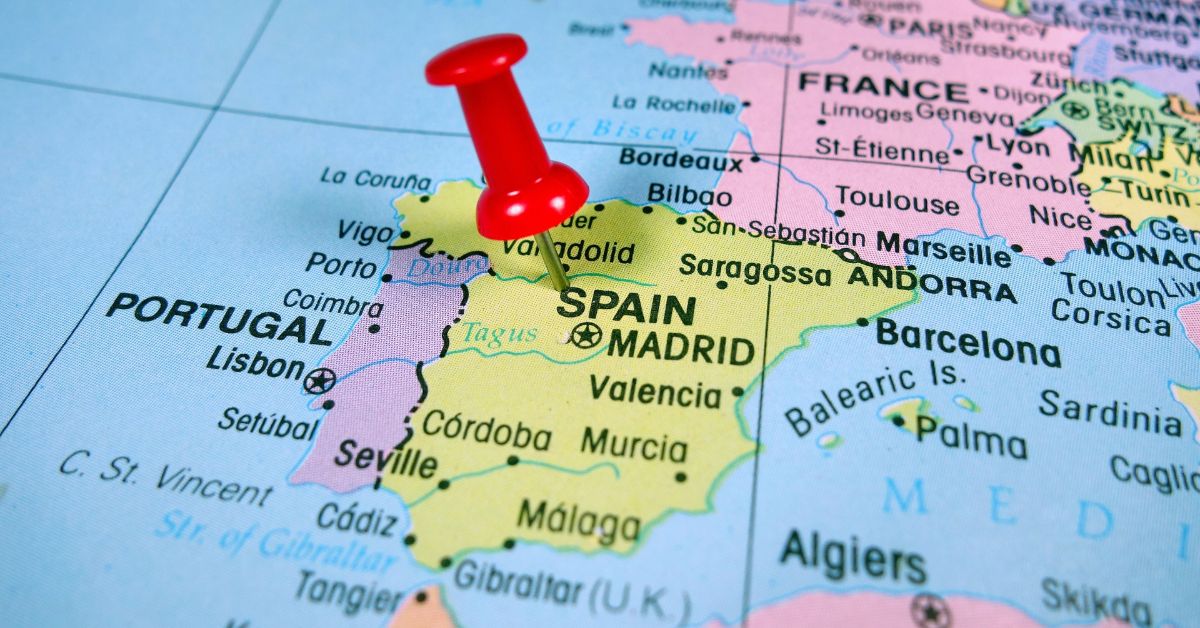
Major Cities of Spain :
Spain is a country of many diverse and beautiful cities. This interactive map of the country lets you explore the major cities of Spain and learn about their history and attractions. Pamplona is home to theRunning of the Bulls, and Valencia is known for its stunning architecture. Barcelona is a thriving city with a rich cultural heritage, and Madrid is the capital of Spain. This map is a great way to learn about the different cities and cultures of Spain.
Barcelona
If you’re looking for a city with loads of things to do, Barcelona is definitely the place to be. From world-renowned football (soccer) clubs and famous landmarks like Gaudi’s Sagrada Familia to mouth-watering food and refreshing nightlife scenes, there’s always something enjoyable waiting for you here. Plus, if architecture isn’t your thing, Barcelona also has plenty of other attractions that will pique your interest – from shopping sprees in exclusive boutiques to exploring stunning cathedrals and parks.
Valencia
Valencia is a charming and lively city that offers something for everyone. Its architecture, nightlife, and food are all top-notch, while its connectivity makes it easy to get around.
Seville
Seville is an amazing city to visit if you’re in the mood for a lively and exciting experience. With its beautiful architecture and rich history, Seville will leave you with memories that you’ll never forget. Not to mention, the city has plenty of activities and attractions to keep everyone entertained. From museums galore to world-renowned spas and restaurants, there’s something for everyone here!
Granada
If you’re looking for a city that is full of life and has something to offer everyone, look no further than Granada. The nightlife here is lively and exciting, with plenty of restaurants to choose from. You can also take in some amazing views while exploring the city’s stunning architecture and landmarks. Granada is one of the most popular tourist destinations in Spain, thanks to its beautiful scenery and engaging culture. Whether you are planning on spending your days wandering around or enjoying some delicious Spanish cuisine at one of the city’s many restaurants, Granada has something for everyone!
History
Spain is a country full of history and culture. From the city of Barcelona, which is a UNESCO World Heritage Site, to Madrid and Valencia, which are known for their Gothic architecture and wine markets, there’s something for everyone to see. Don’t forget to check out the beautiful countryside too – like the city of Granada, which is famous for its Mezquita mosque and Alhambra palace. Whether you’re a history buff or just want to explore some of the country’s most popular tourist destinations, this interactive map of Spain will help you get started!
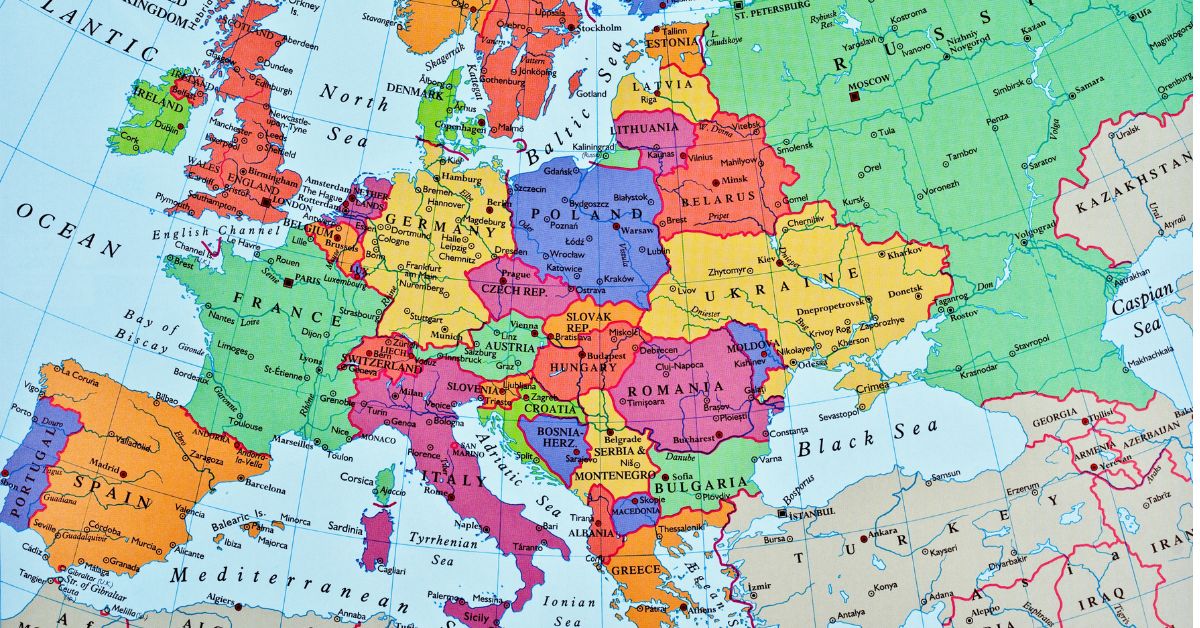
Prehistory and pre-Roman peoples
Spain is a country with a rich and complex culture that stretches back to prehistory. The Iberian Peninsula has been home to many different peoples who have left their mark on the land and its inhabitants. The Celts were the first people to settle in Spain and their influence can still be seen today in the architecture, language, traditions, etc. Islam arrived in Spain around 711 AD and since then it has been one of Europe’s most diverse countries. After Christianity became dominant throughout much of Europe, Spaniards adopted this religion as their own. Today, Spanish is spoken by a large population all over the country
Muslim era and Reconquista
The Muslim era in Spain was a time of great progress and prosperity. Spanning over seven centuries, this period saw the rise of a prosperous and advanced country, characterized by its thriving economy and newly discovered trade routes with Africa and Asia. However, following the death of Muhammad there was a power struggle between his followers. The Abbasid dynasty eventually emerged victorious and ruled for over 200 years until they were overthrown by the Ottoman Turks in 1492 AD. This led to the emergence of two rival factions – the Umayyads (those who followed Abu Bakr) and the Abbasids (those who followed Ali). During this time, Spain saw a massive increase in wealth due to its thriving economy as well as its strong relationship with Islamic countries such as Egypt and Morocco. The Muslim era in Spain was also marked by great progress in many fields such as science, medicine, artistry etc., making it one of history’s most culturally rich periods overall.
Spanish Empire
The Spanish Empire was a major force in shaping Europe and the Americas for over three centuries. Spanning over three continents, this vast empire had an impact on many cities that still remain vibrant and populated to this day. Some of these key cities include Madrid, Barcelona, Valencia and Seville – all of which were under Spanish control at one point or another. Even today, they continue to play host to a rich history and cultural scene.
Liberalism and nation state
Liberalism is a political and social philosophy that upholds the rights of the individual, advocating for freedom of speech, belief, and action. It originated in Europe during the 18th century and gradually spread to other parts of the world. One of its most prominent advocates was French Revolutionist Gilbert de Laverdure (1743-1809). He argued that liberalism helped break down feudalistic systems and promote democracy throughout Europe. In fact, Spain was one of the most successful examples of liberalism in history; it had a strong economy along with a vibrant culture. Nation states replaced feudalism as they helped spread liberal values throughout European countries. This ultimately led to increased freedom and liberty for all people within these states.
Civil War and Francoist dictatorship
Spain’s long and turbulent history is rife with events that have had a major impact on the country. Among these are the Spanish Civil War of 1936-1939, which claimed more than 350,000 lives and saw immense destruction both in terms of physical infrastructure and human life. More recently, anxiety over spiking crime rates has given rise to calls for civic involvement by citizens as well as politicians alike. The Francoist dictatorship was characterized by strict censorship, political repression and economic stagnation. Over time though, Spain recovered economically thanks to a strong tourism industry and booming real estate market. However, since the early 21st century there has been a worrying rise in crime rates – especially among young people – leading to concerns about social unrest or even another civil war.
The Phoenicians
The Phoenicians are a fascinating people who left an immense legacy behind them. They were a seafaring people who settled in the Iberian Peninsula around 1200 BC. Later, they founded cities all around the world, including Carthage, Rome and Beirut. Most famously, however, the Phoenicians founded Cadiz which is now located in Spain. They were also the first to sail across the Atlantic Ocean and divide it into three parts – Europe, Africa and America. Their achievements have been recognized by UNESCO with their induction as a World Heritage Site in 2003.
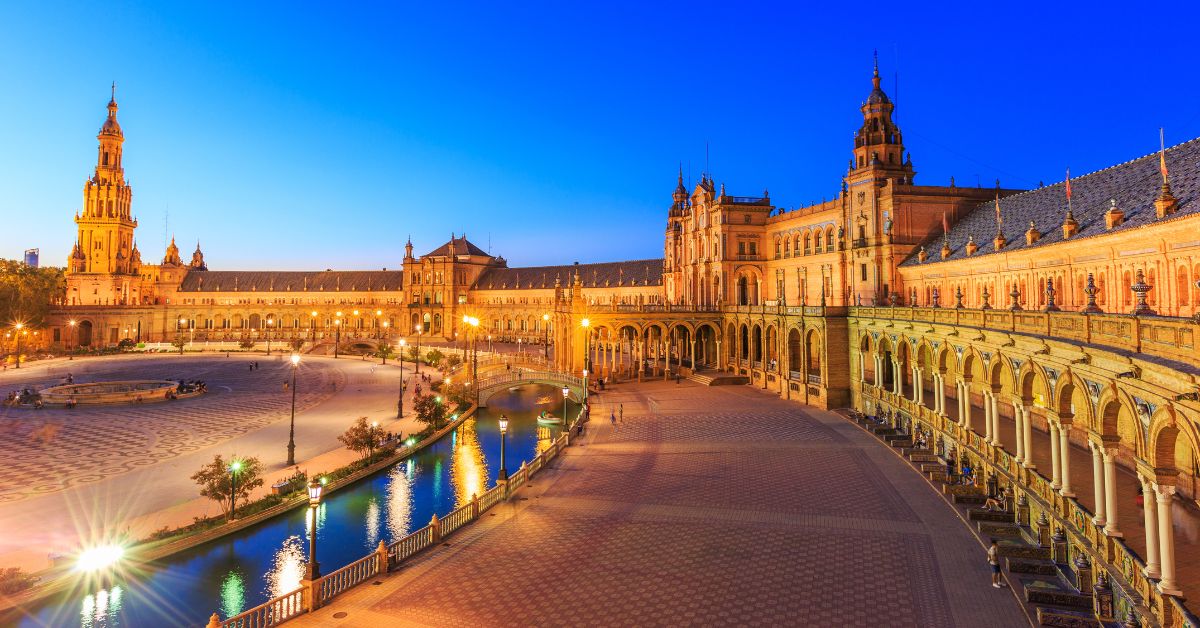
World War II
World War II was a devastating time for Spain. The country was invaded by Nazi Germany and Fascist Italy, which led to widespread devastation and death. Despite this, the country managed to emerge as one of Europe’s most prosperous countries in the post-war era. To date, it has given refuge to over 1 million people who fled their homes during the war and helped them rebuild their lives from scratch.
The Moors
The Moors were a Muslim dynasty that ruled Spain from the 8th to the 13th century. Under their rule, modern Spanish emerged as a language and culture and some of Europe’s most impressive architecture was left behind – including the Alhambra palace in Granada. Though they are now largely forgotten, there is still much to learn about this fascinating dynasty!
Ferdinand and Isabella
Ferdinand and Isabella are remembered as one of the most influential rulers in Spanish history. Their rule marked the beginning of Spanish colonialism in the Americas, and their efforts to unify Spain were long and arduous. The Battle of Las Navas de Tolosa is also particularly noteworthy as it secured Spain’s victory over its Muslim enemies. These historical figures are rightly celebrated for their accomplishments, which have had a lasting impact on modern day Spain and Latin America alike!
The Spanish Civil War
The Spanish Civil War is one of the most infamous and tragic events in history. Initially starting as a civil war between democrats and socialists, it soon turned into a bloody conflict between Franco’s fascist forces and those led by José Antonio Primo de Rivera. For over three years, the war raged on until finally coming to an end in January 1939. Including civilian deaths, the total number of casualties reached 1 million people – making it one of the deadliest wars in history. Nowadays, there is growing interest among students and general readers alike for learning more about this seismic event in Spanish history. This has resulted in several books and documentaries being released recently that explore different aspects of this turbulent time period.
Villamartin spain map
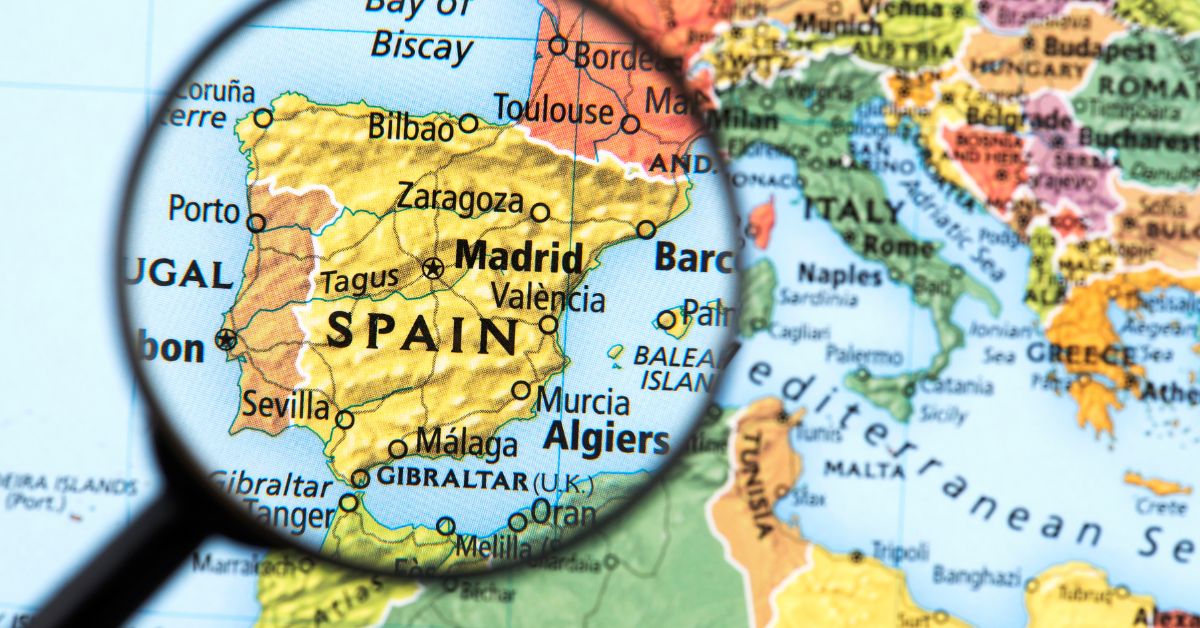
Geography
Spain is a country of many different regions with a rich and diverse history. Geography is an important part of Spanish culture and is reflected in the country’s geography. Gibraltar sits on the Strait of Gibraltar, making it an important European city. The Mediterranean region is home to several Spanish cities, including Madrid, Barcelona, and Valencia. Galicia and Asturias are located in the north of the country, while Andalusia occupies the southern coast. Spain is a large country with many different regions, from the mountainous regions of Asturias and Cantabria to the seashore of Andalusia. To learn more about Spain and its regions, check out our interactive map of Spain!
Islands
Islands are a beautiful and unique part of the world. Some of them are much bigger than others, while some have a more diverse landscape. Regardless of their size or location, visiting each and every one is an unforgettable experience. So make sure to put Spain on your list! Spanning from North to South, Spain has over 8,000 islands – making it one of the most diverse countries in Europe. With its rich culture and stunning scenery, you will never be disappointed when exploring this country!
Mountains and rivers
Spain is a country located in the Iberian Peninsula and bordering Portugal to the west and France to the north. The highest mountain peak is Aconcagua at 22,838 meters above sea level. With a total area of 505,794 square kilometers, it’s one of Europe’s largest countries by size. Spain has several major rivers – Ebro, Guadiana and Tagus.
Climate
The climate of any given place will depend on a number of factors, including location. Coastal areas tend to be wetter while inland areas tend to be drier. There are four seasons – Spring, Summer, Fall and Winter – each with its own set of weather conditions. Cities located in the central and southern regions have a warmer climate while those located on the coasts have a cooler one. Spain has a mild Mediterranean climate that is perfect for tourists and people who enjoy balmy weather all year round!
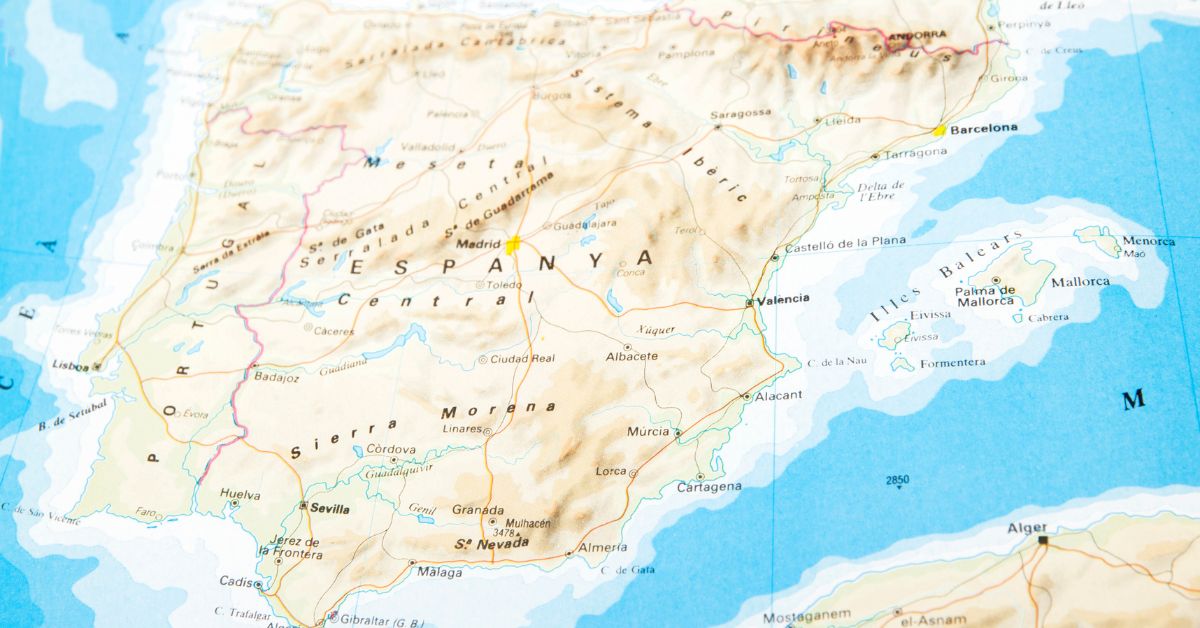
Fauna and flora
There are a wide variety of wild and domesticated animals and plants in Spain that can be found nowhere else on earth. In addition to this, cities are also situated on the map in an important way, revealing their historical significance. To get a better understanding of Spanish culture and history, look at the various places mentioned on the map – this will give you an idea of how interconnected different regions are. You’ll also learn about the distribution of habitats across Spain and understand more about its natural resources.
Climate in Spain
Spain is a country that is rich in culture and history. It has a Mediterranean climate, meaning it experiences hot and dry summers and cold and wet winters. Due to its mountainous terrain, Spain also has extensive forests. The coastal regions are generally milder since they are sheltered from strong winds. The north of the country can be quite hot due to its proximity to the Sahara desert – which makes it popular for tourists who want to enjoy the sunny weather without having to deal with extreme temperatures!
Cities of Spain
Looking for a list of cities in Spain? Look no further! The interactive map on this page provides an easy way to explore all the amazing places that make up this country. Each city has its own unique features and attractions, making it worth visiting multiple times if you can. Some of the most popular tourist destinations in Europe are located here, such as Barcelona, Madrid, Seville and Granada. The map also offers information on transportation options (such as public transport and car rental), sightseeing tips and more! So whether you’re planning a short trip or want to stay for some time, we’ve got everything covered!
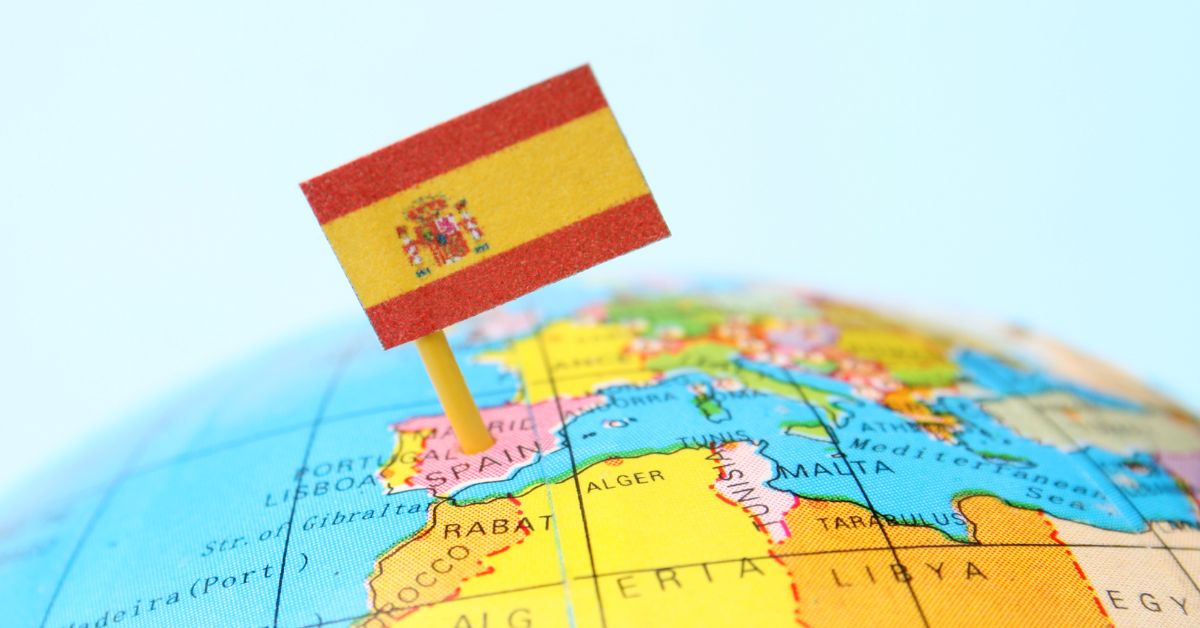
Topography of Spain
Spain is a country with a very diverse topography. In the north of the country, there are hilly areas and cold winters. On the other hand, in the south of Spain, you have coastal towns and extensive Mediterranean coastline. Between these two extremes lies major cities such as Madrid and Barcelona which are well connected by roads and railways to make travelling around easy. The climate in Spain varies from region to region – for example, during summers it can be quite hot in some parts of Andalusia while at other times it can be bitterly cold near the northern borderlands (Galicia). Winters are milder overall however they do get severe weather conditions such as snowfalls on high mountains.
Rivers and Lakes in Spain
Spain is home to some of the most beautiful and picturesque rivers and lakes. From crystal clear waterfalls to lush green valleys, these natural wonders offer a unique experience that can’t be found anywhere else in the world. The map below provides information about each river and lake – from its location and size to popular tourist destinations. So whether you’re planning a trip to Spain or just want to learn more about its rivers and lakes, this tool will definitely come in handy!
Economy
Spain is a country with a lot to offer. From its thriving economy to its many different industries, it has something for everyone. Whether you’re looking to start a business or just invest, Spain is a great place to be. The cities of Madrid, Barcelona, Valencia, and Seville are all major player in Spain and each has its own thriving economy. With so much opportunity to make money, it just takes some research to find the right investment. So what are you waiting for? Start exploring Spain today!
Automotive industry
The automotive industry is one of the most important sectors in Spain. It accounts for a significant share of GDP and employs tens of thousands of people. There are a number of reasons for this: rising demand for cars, improving economic conditions, etc. However, to be successful in this sector you need to have a strong understanding not only about how it works but also the growth drivers that underpin its success. This article will give you an overview of what’s going on with the automotive industry and some key pointers that can help you thrive in this competitive environment.
Tourism
Spain is a country that tourism officials can always rely on for good numbers. This year, the industry is anticipated to generate €236.3 billion in revenue and employ 2.1 million people by 2020, according to Spain’s National Statistics Institute (INE). There are many jobs available in the tourism sector- from hoteliers and tour operators to transportation and catering workers. As Spain continues to be one of the most popular tourist destinations worldwide, it’s important for foreigners looking for work opportunities in this field to research carefully which cities are seeing the highest levels of influxes of tourists each year. Recommended locations include Barcelona, Madrid, Granada etcetera!
Tourism
Spain is one of the most popular tourist destinations in Europe and it has a rich history that tourists can enjoy. The tourism industry contributes significantly to the Spanish economy, and major attractions for tourists include Madrid, Barcelona and Granada.
Energy
Spain is one of the most energy-intensive countries in Europe. This high level of consumption is mainly due to the country’s rapid economic growth and its reliance on traditional sources of energy such as coal and oil. However, Spain is gradually moving towards renewable energy sources, which will only lead to more sustainable practices in the long run. There are a number of ways to reduce your carbon footprint – from choosing green products to using public transportation etcetera. The best way to start reducing your overall emissions would be to do it all at once! In addition, you can also check out our blog for more tips on how you can live a greener life without having too much impact on your budget
Transport
Transport is an essential part of the economy and helps to move people and goods around the country. Knowing which type of transport to use can make your trip easier – whether you’re travelling by air, sea or road. For example, if you’re planning to travel to a city in Spain by air, it would be best tocheck out flight prices and choose the one that’s most affordable for your budget. Similarly, when travelling by sea or road, research what route will take you there quickest and avoid traffic congestion!
Science and technology
Science and technology are two of the most important fields today, and Madrid is home to some of the world’s most advanced projects in these areas. Spain has a long history in engineering – this can be seen in many of their science and technology projects. For example, they’re responsible for pioneering medical research such as developing treatments for cancer. Spain also has a strong presence when it comes to software development – companies like Google and Apple have their headquarters there. In addition to this, many Spanish-based businesses operate globally thanks to the country’s passion for business innovationVillamartin spain map.
Thank you for taking the time to read our blog. In this post, we have provided an interactive map of Spain that can help you plan your trip to this beautiful country. Not only can you see the different provinces and cities in Spain, but you can also zoom in and out to get a better understanding of the area you are interested in. So, whether you are looking for tourist attractions or places to stay, our map is sure to help. Stay tuned for more informative posts about SpainVillamartin spain map!
Frequently asked question
Where is the most beautiful city in Spain?
There is no one-size-fits-all answer to this question, as there are many beautiful cities in Spain. However, some of the most popular places include Barcelona, Madrid, Seville, Granada, and Valencia. each city has its own unique charms that make it worth exploring for anyone looking for a destination to spend their vacation or business trip.
What part of Spain should I visit?
There is no one-size-fits-all answer to this question, as the best part of Spain depends on your interests and preferences. However, some general guidelines that may be useful include Barcelona, Madrid, Granada, Valencia, Pamplona (for bullfighting), Seville (for its Moorish architecture), La Coruna (for its seafoods), or Malaga (for its beautiful beaches).
What are the 5 major cities in Spain?
If you’re looking for a fun and cultural experience, then Madrid may be the city for you. This metropolis is home to some of the world’s most iconic landmarks, such as La Casa de las Américas and El Prado Museum. You’ll also love its lively nightlife scene, including plenty of clubbing options. Barcelona is another great option if culture is your thing. This bustling city has been called “the new Paris” by many experts and offers an array of unique attractions, such as Gaudi’s Park Guell and La Pedrera quarry.
What are the 5 regions of Spain?
Spain is a large and diverse country that is made up of five regions: Andalusia, Aragon, Basque Country, Catalonia, and Galicia. Each region has its own unique culture and cuisine that you will want to experience if you are ever fortunate enough to visit Spain. Some popular destinations in each region include Barcelona, Granada, Seville, Madrid/Parliament Hill ( Zaragoza), Valencia/Nueva Helix ( Alicante), Pamplona/San Fermín (Navarra), Bilbao/Guggenheim Museum (Bilbao).
Conclusion
Thank you for taking the time to read our blog. In this post, we have provided an interactive map of Spain that can help you plan your trip to this beautiful country. Not only can you see the different provinces and cities in Spain, but you can also zoom in and out to get a better understanding of the area you are interested in. So, whether you are looking for tourist attractions or places to stay, our map is sure to help. Stay tuned for more informative posts about SpainVillamartin spain map!
